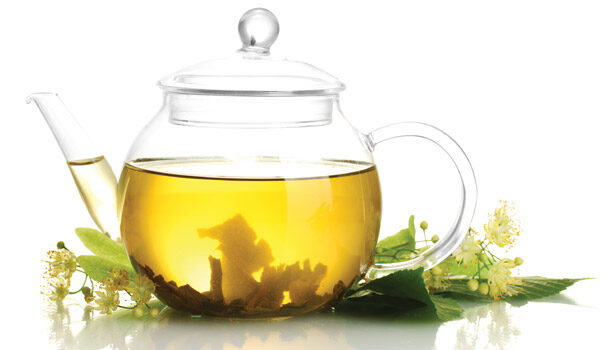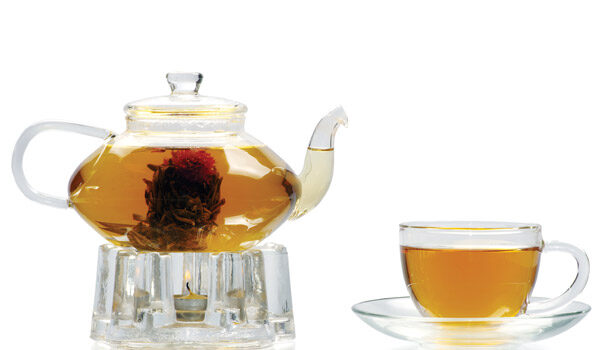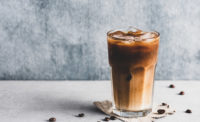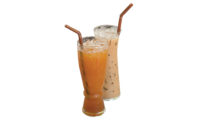Pity the poor soft drink. While sales of carbonated soft drinks fell, sales of refrigerated coffees and teas rose in double digits in the last year.
Coincidence? Not to those who understand that the flipside of our shift away from “bad-for-you” beverages is a shift toward wholesome alternatives — like ready-to-drink (RTD) coffees and teas. Brian Bergstresser, director, dairy business unit, Robertet Flavors, Piscataway, N.J., noted, “Dairies and their retail partners are uniquely positioned to give consumers what they want, when and where they want it.”
Against this backdrop, Dairy Foods convened a virtual roundtable to suppliers of coffee and tea ingredients and asked them to spill the (coffee) beans and read the tea leaves about what’s driving sales of RTD coffees and teas, and how dairy processors can capture a share of the market.
Dairy Foods: When you look at the RTD coffee and tea sector, what do you see?
Josh Young, account executive, Mother Murphy’s, Greensboro, N.C.: We’ve seen a dramatic increase in customers requesting development of RTD coffee and tea products. Based on the uptick in activity, we predict dramatic growth in this market segment over the next two to three years.
Jessica Jones-Dille, associate director, marketing & new business development, Wild Flavors Inc., Erlanger, Ky.: [Ready-to-drink coffee and tea products] create value and convenience as a cheaper and quicker alternative to stopping for an indulgent crafted drink at a coffee or tea chain. Ready-to-drink solutions also give consumers an easy alternative to brewing or crafting drinks at home or on the go without the need for a home appliance or special flavors, creamers or sweeteners. And they offer a seemingly better-for-you alternative to carbonated soft drinks.
Dairy Foods: Let’s talk about that better-for-you angle. How much of the sector’s strength would you attribute to its healthier appeal?
Kevin Goodner, product manager, extracts & essences, Synergy Flavors Inc., Wauconda, Ill.: A fair amount. There are several factors at play. First is the desire to move away from sugary drinks like carbonated soft drinks — CSDs — as they’re seen to be empty calories. Second is the trend for consumers to avoid HFCS (high-fructose corn syrup). So you have those two forces pushing people away from CSDs while, at the same time, you have the health benefits of tea and coffee pulling people to these beverages. This is one of the reasons you’re seeing more activity at CSD companies to increase their RTD tea and coffee offerings.
Cassandra Kaul, beverage market research analyst, Kerry, Beloit, Wis.: Health-and-wellness is one of the largest trends we’re continuing to see with consumers. Paired with the convenience and portability that comes with an RTD format, which is a one of the top three factors in consumer purchases, coffee and tea are set to thrive.
Dairy Foods: What are the purported health benefits? What’s the science behind them, and which types of tea or coffee have the best health-and-wellness track record?
Heather Biehl, associate director, Health Ingredient Technology & Solutions, Wild Flavors: All types of tea are good for you. However, green tea is by far the most consumed and researched. The uniqueness of green tea is a result of how it is processed. Green tea is one of the least processed teas, which preserves its nutrients. These nutrients contribute to green tea’s health benefits.
Green tea contains caffeine, amino acids and polyphenol antioxidants. The major class of polyphenols found in green tea are called catechins, of which epigallocatechin gallate (EGCG) is probably the most well recognized. Green tea benefits cardiovascular health, immunity, anti-aging, cognitive health, blood sugar control and weight management.
Youngmok Kim, senior research scientist, Synergy Flavors: White tea has fewer antioxidants than green tea and oolong and black teas lose their antioxidants and catechins as they’re transformed into theaflavins.
Kim Cipriano, director of marketing, Autocrat LLC, Lincoln, R.I.: The tea category has evolved from being perceived as a morning starter or afternoon refreshment to being one of the most popular functional beverages on the market
Autocrat recently hired a qualitative research firm to conduct a marketing study to gain consumer insights into tea-based beverages. Health benefits of tea that respondents cited include helping with hydration, offering a better choice than soda, having less sugar with fewer calories and containing antioxidants.
Dairy Foods: How does java measure up, health-wise?
Jones-Dille: Studies have shown that there is a link between increased coffee consumption and a decrease in the risk of developing dementia, Alzheimer’s and Parkinson’s. Coffee acts on a region in the hippocampus in the brain that can actually impact short and long term memory.
Dairy Foods: To what extent do these benefits carry over from the freshly brewed coffee or tea to bottled RTD beverages?
Jim Hamernik, director of research and development, Flavorchem, Downers Grove, Ill.: They all have their good attributes but this is a tricky question as it all depends on the finished product and how much of the coffee or tea is included.
Goodner: There’s a wide range of teas on the market and the benefits carried over can vary. Some provide good amounts of polyphenolics from tea, while others have zero tea polyphenolics and are largely just a caramel-colored, flavored beverage. The bottom line is that not all tea beverages necessarily contain much tea content.
Kim: Coffee beans lose significant amounts of chlorogenic acid during roasting because it’s not heat stable. The chlorogenic acid content is approximately ten times higher in raw, green coffee beans; that’s why we see more green-coffee-based drinks, like Starbucks’ Refreshers, in the market today.
Biehl: RTD coffees and teas can be formulated to include the active components responsible for health benefits. There are many RTD-friendly standardized extracts available.
Dairy Foods: But are extracts the “real thing,” both from an active-component standpoint, as well as in terms of “connoisseur” cred?
Sue Maiocchi, product optimization manager, food innovation & ingredients division, S&D Coffee Inc., Concord, N.C.: Absolutely! Just as there’s a huge variety of methods used to brew coffee — pour over, percolator, French press, et cetera — the coffee-extraction process can be looked upon as a larger method allowing for the scaling of the coffee-to-water ratio to achieve a more concentrated version.
Take extraction one step further and additional concentrating can be achieved through various industrial methods. This is where connoisseurs may draw the line, as concentration methods can expose the coffee extract to harsh conditions that impact the original flavor profile. However, in the extract form, it is a very stable product and can withstand a certain level of abuse.
Either way, coffee extracts and concentrates provide the “real” color, aroma and flavor of coffee versus natural and artificial flavors.
Douglas Rash, vice president, global sales, Treatt USA Inc., Lakeland, Fla.: In production, factors such as time and temperature of brewing are carefully researched to maintain the best flavor profile. If an extract or essence is to be made, rapid processing with low heat stress is a must.
Goodner: Although tea essence is the real thing, it should be noted that essence contains just the aromatic portion of tea and does not contain the healthy dissolved solids portion, the tea extract.
Jeff Foss, principal scientist, Wild Flavors: For labeling purposes, what’s “real” is open to quite a bit of interpretation, but as a generalization, coffee or tea concentrates are treated much the same as juice concentrates, so it’s common to see the “brewed” coffee or tea qualified parenthetically as “(coffee/tea concentrate, water).”
Dairy Foods: What are other advantages of using coffee and tea extracts, concentrates and essences?
Foss: While the highest quality will likely be achieved using freshly brewed coffee or tea, it’s often impractical from a manufacturing standpoint, as the handling and disposal of coffee grounds or tea leaves is cumbersome, and the brewing process itself increases overall batching time.
While using liquid concentrates or instant powders alleviates those issues, much of the coffee or tea volatile flavor top notes are lost during their respective concentration processes. For this reason it is often necessary to top-note the finished formula with a fresh-brewed type coffee or tea flavor.
Dairy Foods: Help us understand the “flavor experience” that consumers are looking for from RTD coffees and teas — and which ingredients help get us there.
Anton Angelich, group vice president, marketing, Virginia Dare, Brooklyn, N.Y.: Coffees can be made from Arabica or Robusta beans; lightly, medium or dark roasted; brewed strong or weak; sweetened to various sweetness levels or not sweetened at all; lightened with cream, half-and-half, whole milk, 1% or 2% milk, skim milk, or dairy-free alternates such as almond milk.
When all these possible combinations are examined, it’s become a quandary for the RTD-coffee marketer to choose which profile to match, or how many RTD profiles should be offered.
Maiocchi: What works for one application doesn’t necessarily work for all. If the developer wants a “coffee forward” flavor in a product with little or no sugar, then a low concentration extract will probably work best. If the developer is making a product that is predominantly dairy, with sweeteners, nutraceuticals, flavors like hazelnut or other competing flavors, then a high-level concentrate would be recommended — one that has some dark-roasted, bold, heavy-body coffee flavor.
Dairy Foods: What about teas? Which varieties or profiles translate best to the RTD medium?
Kim: In the United States, about 85% of tea is consumed iced. When tea is at a cold temperature, green tea is characteristically “grassy” or “leafy,” which isn’t favored by most Americans. However, black tea’s overall flavor is more acceptable at cold temperatures.
Caroline Vogel, director of quality/R&D, Autocrat: We find that when making tea lattes, combining a Ceylon or oolong black-tea concentrate with a green-tea concentrate for the added healthy halo compliments the flavor profile of the dairy and non- dairy bases.
Angelich: It can be said that straight green tea — from a taste standpoint — may not be everyone’s “cup of tea.” However, green tea’s taste acceptance can be widened by selectively adding synergistically appealing fruit flavors, such as apple or lime.
Dairy Foods: That idea of flavoring tea or coffee can be polarizing. Some people like a little lemon in their tea or vanilla in their latte; others find it anathema. If we go down that road, help us understand how best to match the flavors to the RTD beverage base.
Jessica Kidwell, senior key account technical manager, Wild Flavors: Flavor selection is heavily dependent on the actual product. Teas, which are likely high-acid/low-pH beverages, are often astringent; highly concentrated flavors may be required to overcome the tea profile. Similarly, the tea component may be reduced to allow the characterizing flavor to come through.
Angelich: If a flavored tea is to deliver the taste of a characterizing fruit, such as lemon or raspberry, then the beverage should closely deliver the flavor, aroma and acid-to-Brix ratio found in that fruit in nature.
Kidwell: For coffee products, which typically have a neutral pH and undergo intense heat treatment — compared to hot-filling — flavors need to be heat stable. The flavors can be applied into the beverage, in order to select the desired profile and level, and then need to be processed, ensuring that the flavor has not changed or degraded. Off-notes can also develop from this rigorous heat treatment.
Maiocchi: The best flavored coffees on the market today are ones that complement the coffee — meaning the flavor brings out a subtle profile that already exists in the coffee, such as nutty, sweet, fruity, and spicy. Creamy flavors mimic the cream many people enjoy with their coffee. Combining different coffee profiles with different flavors is the creative, fun part of product development and enjoyment for the consumer.
Dairy Foods: Sweetness level is also important to an RTD product’s overall profile. How do we strike the right sweetness balance?
Susan Brady, director, sales and marketing, Templar Food Products, Providence, N.J.: An important characteristic to keep in mind during the R&D stage is that tea is a regional drink. Sweetener levels and flavor profiles vary from state to state. Simply stated, sweet tea in the South should taste nothing like lemon tea in the North. The flexibility to fine-tune a formula based on these regional preferences is a home run.
Dairy Foods: Which sweeteners do consumers most want to see in their RTD products, especially given coffee and tea’s better-for-you reputation?
Rash: The “natural” label is a strong driver for beverage consumers. The newer natural sweeteners — in particular stevia, lo han guo, and thaumatin — have attracted much attention in the industry. They all present challenges in RTD formulation.
John Wilson, marketing manager, Allen Flavors, Edison, N.J.: Because organic stevia is now available, we can develop organic RTD tea beverage formulations which also do not affect the nutritional qualities of the product.
Angela Lantman, application manager, coffee & tea, Synergy Flavors: I’m a proponent of using real sugar. Not everything has to be so overly sweet that it adds too many calories. Still, stevia continues to be the best natural no-calorie sweetener available for use in RTD teas.
Dairy Foods: I’m counting how many times each of you said “natural” just now. Clearly, this is a formulation imperative when developing RTD coffees and teas. But can going au naturel ever compromise quality or stability?
Phil Sprovieri, vice president of sales and marketing, Flavorchem: Both plain teas and coffee are very susceptible to microbial growth. In RTD teas, traditional preservative systems can be effective, such as sodium benzoate and citric acid where fruit flavors are blended with tea. But many customers do not want to list these on their ingredient statements. The best system for preservation would be processing with heat, which allows for a “clean” label.
Rash: Acidification is commonly used both for flavor enhancement and for preservation against microbial growth. Most acidulants are synthetic, but it is sometimes possible to use juice concentrates, which are naturally acidic, to preserve the “natural” status. The trend toward higher levels of tea solids has been problematic here, since tea solids tend to neutralize the acidity.
Dairy Foods: What challenges to stability and quality should we be aware of when processing these beverages?
Lantman: Both coffee and tea taste better at higher pH levels. The drawback for making a shelf-stable cold-filled beverage is that the preservatives and the lower pH levels will make it harder to produce a beverage that tastes the same as freshly brewed beverages. And it can be difficult to formulate both RTD teas and coffees that can withstand the longer shelf life because both have flavors that can oxidize and degrade over the desired shelf life. Refrigerated products typically have shorter shelf lives, but they taste closer to the fresh-brewed product.
Foss: Protein stability is a major hurdle when milk is combined with coffees or teas for a couple of reasons. One, the coffee or tea concentrates introduce acidity, and proteins are acid-sensitive, so the formula typically needs buffering to avoid protein flocculation. Also, introducing milk almost always means the final product will be neutral pH, or low acid, and will require an increased level of processing for shelf stability — normally via UHT or retort sterilization. Again, proteins are generally very heat labile and interact easily with other ingredients under such high heat, so properly stabilizing these coffee or tea lattes can be quite complex to maintain homogeneity in the package.
Armin Prahst, technical director, Tea Wolf LLC, Pine Brook, N.J.: Certain stabilizers might slow this reaction or the settling of precipitates, as in the use of carrageenan in chocolate milk.
Dairy Foods: What tastes or trends are you monitoring that will improve the RTD coffee or tea experience even more?
Goodner: One area that has great potential is tea lattes. Drinking milk with tea is common in many parts of the world, but not in the United States. As more coffee houses add this to their menus, RTD tea lattes are likely to follow.
Bergstresser: I see more market opportunities for low-calorie teas and unsweetened teas in half-gallon and gallon containers. These enable a family or group of friends to share at the table, family-style, yet individualize their serving by adding a lemon wedge, sugar or alternative sweeteners to taste — or add nothing at all. Personally, I need to watch my sugar intake, so I usually buy an unsweetened iced tea, but sometimes I add a bit of sugar to satisfy my personal sweet tooth!
Prahst: The possibilities don’t end with traditional tea and coffee products, as more botanical extracts are finding their way into the RTD beverage segment, such as hibiscus, yerba mate and guayusa, just to name a few.
Kaul: Currently we’re seeing coffees and teas beginning to take on an even healthier image with value-added ingredients making their way into ingredients decks. We’ve seen coconut water for hydration, oats for heart health and even unique sources of caffeine, like green coffee-bean extracts for weight loss.
With consumers demanding more customized products, we’re already seeing tea products being positioned specifically for kids. We may see additional demographics such as Millennials and Baby Boomers get a renewed focus as they push for beverage alternatives.
Why coffee, tea make sense for milk processors
Why would a fluid-milk processor want to get caught up in processing and packaging RTD coffees and teas?
Kevin Goodner, Synergy Flavors: To be glib, would a dairy rather sell a gallon of plain milk for $3 or a gallon of “coffee-flavored milk” for $8? If you look at the price per gallon, the ranges on specialty dairy-case coffees go from $7 per gallon to over $13 per. That represents a fairly healthy margin opportunity.
Brian Bergstresser, Robertet Flavors: These higher-margin items can ride alongside more traditional fluid milk products on the dairy truck, and as such represent an attractive profit center for fluid milk processors.
Armin Prahst, Tea Wolf: There’s a lot of overlap in the operations of fluid-milk processing and RTD coffees and teas in how the products are processed and filled. Depending on the existing equipment the investment to process RTD coffees and teas may be quite small, often just requiring a blending tank and certain attachments to the filling line to package the beverages into the right containers.







.jpg?height=200&t=1643904656&width=200)
